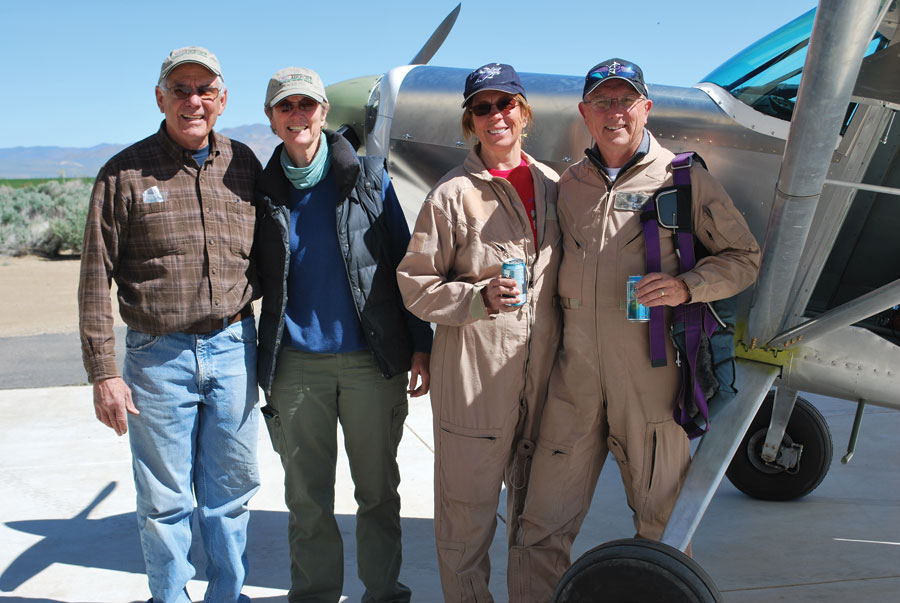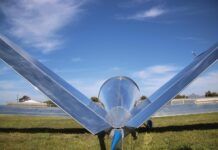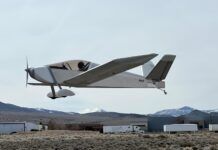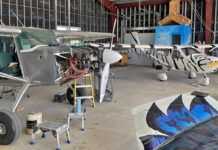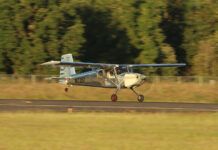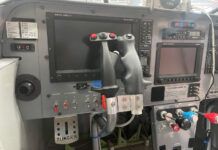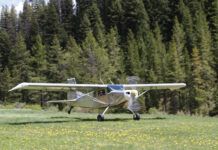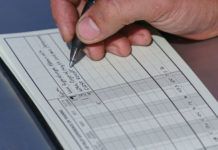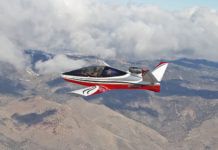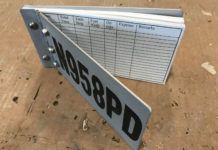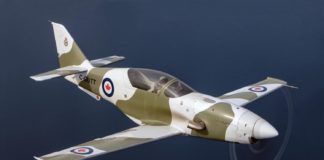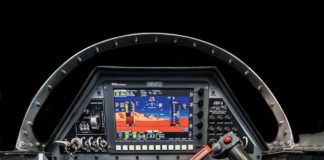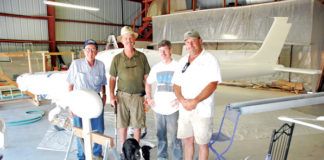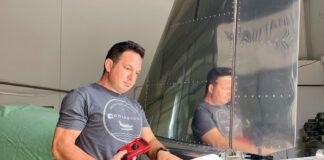When the Homebuilding movement began in earnest (I’m not talking about all the flying machines built in barns in the 1910s and ’20s), putting together an airplane that would actually fly was hard work—and not just in the workshop. A builder had to find all of the necessary parts, collect them from a very few random sources, and build without much guidance or help. The EAA formed to help spread the good knowledge from builder to builder and provide a support network for those trying to achieve flight. When airplane kits began appearing in the 1970s (or so), those who wanted a finished aircraft had much of this work done for them, and they also had tech support available (some companies doing better than others) when they got stuck assembling their craft.
Many today talk about kits being “assembled” rather than “built.” While I understand that to mean that a lot of people don’t have to plant the seed to grow the tree that they will carve into a spar, it is somewhat disparaging to those who will still spend an average of a couple thousand hours putting their airplane together and making the thousands of decisions required to come up with their desired configuration. Yes, kit building requires commitment—of energy, time, and money. Those that have reached the point where they have finished and licensed an aircraft should be rightly proud of the accomplishment, regardless of where they started.
One of the great advantages the new builders have today is the network of those that have gone before—the seasoned builders (meaning that they have completed at least one project) that can be called upon for advice or help. Advice comes in many forms: at EAA meetings, in published articles, and on the internet. One has to build up a good understanding of where good advice comes from, of course, and which to ignore, but most of us didn’t fall off the turnip truck yesterday, and have a good instinct for whom to follow. One way of getting at least some assurance that the person telling you how to safety wire your turnbuckles knows what they are talking about is to use the EAA Technical Counselor program. EAA tech counselors have built aircraft, many are A&Ps, and the fact that they took the time to get the credentials says that they are interested in helping others. They might start out thinking that it is nice to have the title by their name, but most find very quickly that being a TC has its own unique benefits.
You see, helping others to the finish line is incredibly rewarding. Seeing a new builder develop skills that they didn’t have before, build the confidence that it takes to know that their airplane will be sound, and to watch them take wing will warm the heart of anyone who understands the joy of sharing aviation. And you know what—you don’t even have to be a tech counselor to enjoy the experience. Lending assistance is something that anyone with a will and knowledge can pursue, maybe by joining in a stalled project and helping the builder make it to the end.
In early 2015, my wife and I found just such an opportunity, one mutually beneficial to the stalled builder and ourselves. We wanted a large(ish) bush plane, and Jim Kinninger had one that he was stuck on. The airframe was structurally complete, but lacked finished wiring and nothing forward of the firewall had been touched. In fact, nothing was there at all because there wasn’t a kit for that. Buying half the project would give us the plane we wanted for much less cash, and it would see our future partner Jim get the help he needed to realize his dream.
We started the partnership by helping out for a month; we figured that in a month’s time, we’d know if we were compatible in the shop and in our way of thinking to make a good team. We said up front that if we didn’t think it was going to work out after that, the time and effort we had invested up to then was our gift—a gift to Jim, a gift to aviation. And if we did like what we were doing, we’d go all in and get the project airborne.
A little less than a year and a half later—15 months, to be exact—we flew the Dream Tundra, N710JK, for the first time. Yes, “Dream Aircraft” is the name of the kit manufacturer. But we fulfilled Jim’s dream, as well as our own, by finding the airplane we wanted, by completing another homebuilt, and by contributing what was needed to get the plane in the air. The next dream is to finish the testing, get everyone checked out and thoroughly safe in the airplane, and head out into the wilds of Nevada with camping gear and supplies to explore places unreachable by reasonable surface means. The Tundra should make those dreams come true.
Saving a project and its owner from the doldrums of indecisions and despair gives you a feeling of accomplishment well beyond what you get in just finishing another airplane project. Those who have built many times and are looking for a new challenge, a new experience, or a new airplane might want to give it a try. EAA chapters are great places to find such projects. Yes, you can offer to buy them for a dime on the dollar and take them over yourself. But think about the added pleasure you’ll get if, when you’re done, you not only have a new airplane—but a new friend and the feeling that you have helped them to reach their dreams.
Adding to the Fleet
Yes, we do indeed now have a flying Dream Tundra in the family, along with a passel of RVs and an under construction Xenos motorglider for those times when we just feel like shutting off the motor and riding the wave. The Tundra was last reviewed in the June 2008 issue of KITPLANES [“Floating the Dream: The Tundra finds its niche on the water.”] and is a solid, all-metal, high-wing bush plane with four seats and motor choices ranging from about 180 hp and up. Dream Aircraft is located in Quebec, and while many have not heard of them, they still turn out kits and provide support to builders across the planet. The Tundra was designed to serve those who need a bush plane, but want to build it themselves, and carries on in the grand tradition of Canadian and Alaskan aviation choices. N710JK sports an IO-360 parallel-valve engine, a Hartzell blended airfoil constant-speed prop, and a three-screen Dynon SkyView avionics package with integrated com and transponder. Carrying more than 50 gallons of fuel, it should have the legs to reach most backcountry destinations with ease and carry a lot of gear getting there.



